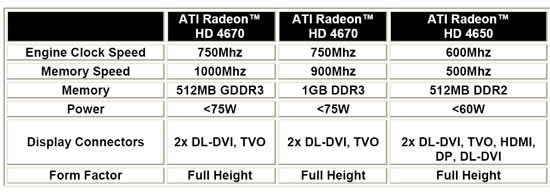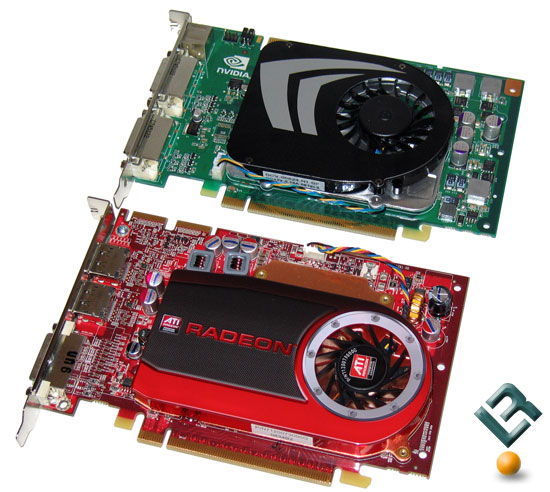
AMD ATI in the last 3 months has released the newest line of VGA ATI Radeon 5xxx series. At the end of September for the first time ATI issued a series 5xxx range of ATI Radeon 5870 and 5850, ATI Radeon 5770 and 5750 on the release of the last mid-October 2009 and ATI Radeon 5970 mid-November or 1st of the month following the launch of the 5770 and 5750.Chip on the ATI Radeon 5xxx codenamed Cypress, is the development of the RV790 chip used by ATI's Radeon 4890. Many were developed in the cypress as the number of transistors, Stream processors, texture units and ROP all be 2-fold more than RV790 chips (Radeon 4890). And of course there are also new technologies applied to the Cypress chip (Radeon 5xxx) Eyefinity for example, less idle power compared to the previous ATI Radeon series, 40nm manufacturing process, and the first VGA chip that supports DirectX 11. Actually what the new technology of the latest video card from ATI is this?, Ane try to explain little yak. 1. Eyefinity If we have a 17 "monitor usually we will set your monitor resolution at 1024 x 768 or 1280x1024 and if you're lucky to have the monitor 24" wide you can set the monitor up to a maximum resolution of 2560 x 1600 if you set it on the desktop windows or setting of your games play. But just imagine if you can set your monitor resolution at 3600 x 1920 or even up to 7680 x 3200. Now you do not have to imagine it because you can do Eyefinity technology. 3 Monitor Resolution 3600 x 1920 Yup Eyefinity technology on the ATI Radeon 5xxx lets you combine 3 monitors or even 6 monitors at once so that it can play your favorite games at maximum resolution up to 7680 x 3200 only on a VGA card. But for now ATI Radeon 5xxx edition, one VGA card can only combine 3 monitors instead of 6 monitors unless you intend to buy a VGA card again for the Crossfire (dual graphics cards) or can also buy additional DisplayPort output DVI / HDMI with prices reaching 100 U.S. dollar and the possibility of DisplayPort is not yet available in Indonesia. 6 Monitor Resolution 7680 x 3200 But do not worry in the near future AMD ATI will release a special ATI Radeon 5xxx series that can incorporate six monitors at once just with a VGA card. 2. Evergreen VGA card requires greater electrical power when playing games but if you use the computer only for typing only electrical power used was smaller. Technology evergreen that is how the VGA card can reduce electric power consumption during idle VGA card (not used). Actually this is not a new technology because it has long been both a VGA card ATI or NVIDIA has implemented this technology, only the ATI Radeon series 5xxx efficiency of electric power consumption at idle even greater. For example comparison of VGA cards HD 4870 with 5870, to 4870 when the heavy work requiring a maximum of 160 watts at idle and down 60 Watt ATI Radeon 5870 while at work requires a maximum weight of 190 Watt and down to 27 Watts at idle, the decline in electric power drastic. 3. Directx 11 One new development from ATI Radeon 5xxx series is DirectX 11. As we already know DirectX is a driver or API (Application Programming Interfaces) that bridges between the windows and hardware, multimedia hardware such as joysticks, sound card, mouse, and of course the VGA card. Along with the development of the VGA card from year to year is also experiencing growth as DirectX DirectX 8, DirectX 9, DirectX 10, and last DirectX 11.The role of DirectX to the games is the picture quality game itself, the latest version of DirectX directx 11 would have the best image quality. Try clay ratio of DirectX 10 games with DirectX 11 on STALKER: Call of Pripyat To image a visible difference in DirectX 10 and DirectX 11 is on the lighting but not too different from the background in Figure 2 below. Each game will always differ on the quality of the image depends on how developers are optimizing directx 11 games. In my opinion the picture quality with directx 10 directx 11 does not change significantly. Games with a dazzling picture quality is not necessarily the absolute use of DirectX 11 as an example game Call Of Duty: Modern Warfare 2, the picture quality is stunning even though this game only uses DirectX 9 and can be juxtaposed with the games already on directx directx 10 and even 11. And do not forget the games that already support directx 11 even though you have settingannya mentokin all the picture quality is not necessarily possible directx 11 directx 9 only the picture quality. This can happen due to software and hardware used, there are three factors that affect a game that runs on directx 11 mode, namely:
- Operating System: Must use Windows 7 or Windows Vista already installed DirectX 11 while
windows xp can not.
- VGA Card: At the time of writing this review only the ATI Radeon new 5xxx series supports directx 11, possibly in
the near future NVIDIA will release their latest VGA card supports DirectX 11
- Games itself: Because directx 11 is a new technology only a few games that support directx 11
eg DiRT 2 and STALKER: Call of Pripyat, but certainly within a few months later games
which already supports DirectX 11 berbanjiran.
All three factors must be qualified if one factor alone is not met then, of course, games do not run in directx 11 mode.



